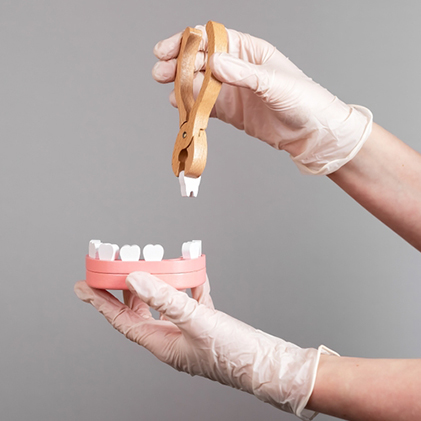Painless Tooth Removal
Painless Tooth Removal, also known as Painless Extraction, is a dental procedure that involves removing a tooth from the mouth without causing discomfort or pain to the patient. This technique is typically used for teeth that are severely damaged or decayed, and cannot be saved with other forms of treatment.
What is Painless Tooth Removal?
Painless Tooth Removal is a specialized technique that uses advanced anesthesia and sedation methods to ensure that the patient does not feel any discomfort or pain during the extraction process. This technique is typically used for teeth that are:
- Severely damaged or decayed
- Loosely attached to the jawbone
- Causing discomfort or pain
- Infected or abscessed
How is Painless Tooth Removal Performed?
The procedure for painless tooth removal typically involves the following steps:
- Pre-Procedure : The patient will be given a sedative or anesthetic to help them relax and reduce anxiety.
- Preparation : The dentist will prepare the tooth for extraction by cleaning and disinfecting the area.

- Extraction : The dentist will use a specialized instrument to gently rock the tooth back and forth, loosening it from the surrounding bone.
- Removal : The tooth is then removed from the mouth using a gentle pulling motion.
What are the Benefits of Painless Tooth Removal?
The benefits of painless tooth removal include:
- Reduced anxiety and stress : Patients who are anxious about dental procedures can benefit from the sedation and anesthesia used in painless tooth removal.
- Reduced discomfort : Patients who experience pain or discomfort during a traditional extraction may find that painless tooth removal is a more comfortable option.
- Faster recovery : Patients who undergo painless tooth removal may experience faster recovery times due to reduced bleeding and swelling.
- Increased confidence : Patients who undergo painless tooth removal may feel more confident about their dental care due to the reduced discomfort and anxiety associated with the procedure.
What are the Types of Painless Tooth Removal?
There are several types of painless tooth removal, including:
- Conscious Sedation : This type of sedation involves using medications such as nitrous oxide or oral sedatives to help patients relax and feel more comfortable during the procedure.
- Intravenous Sedation : This type of sedation involves using medications administered through an IV to help patients relax and feel more comfortable during the procedure.
- Local Anesthesia : This type of anesthesia involves using numbing medications to numb the area around the tooth being extracted, reducing discomfort and pain.
- General Anesthesia : This type of anesthesia involves using medications to put patients to sleep, allowing them to remain completely relaxed during the procedure.
What are the Risks and Complications of Painless Tooth Removal?
While painless tooth removal is generally considered safe, there are some risks and complications associated with this procedure, including:
- Bleeding : Patients may experience bleeding after the procedure, which can be treated with pressure and medication.
- Infection : Patients may be at risk for infection after the procedure, which can be treated with antibiotics.
- Nerve damage : Patients may experience numbness or tingling in their lips or tongue after the procedure, which can be temporary or permanent.
- Dry socket : Patients may experience dry socket after the procedure, which can be treated with medication and good oral hygiene.